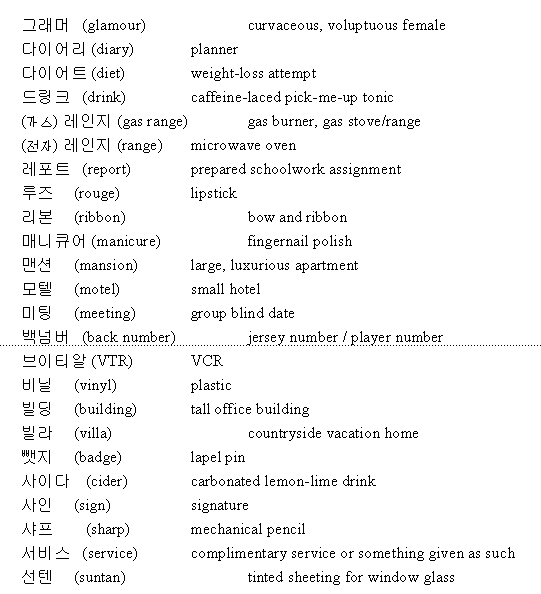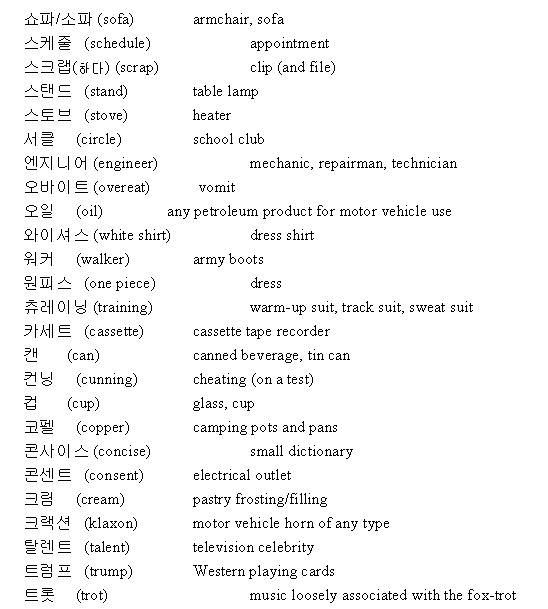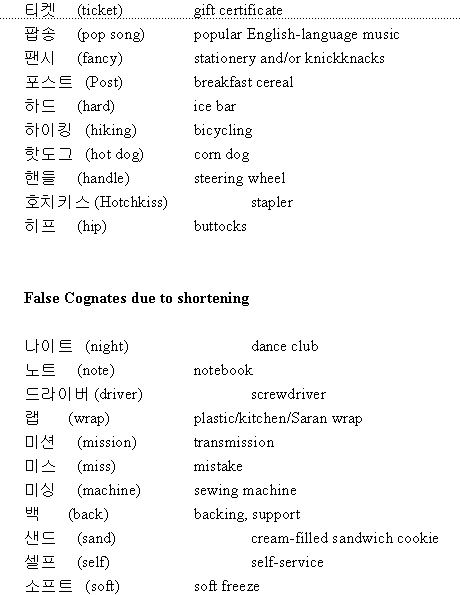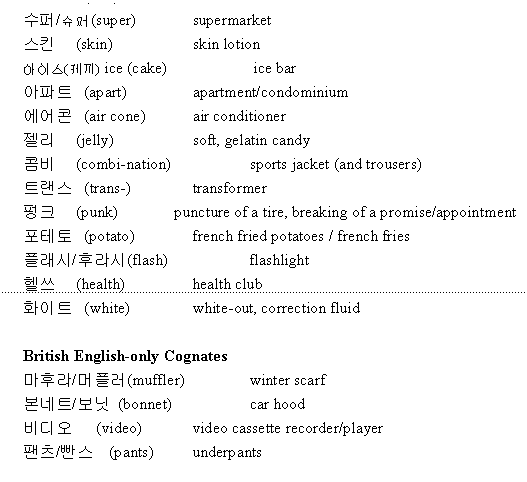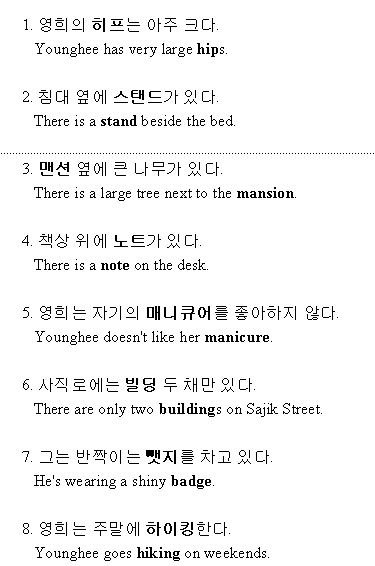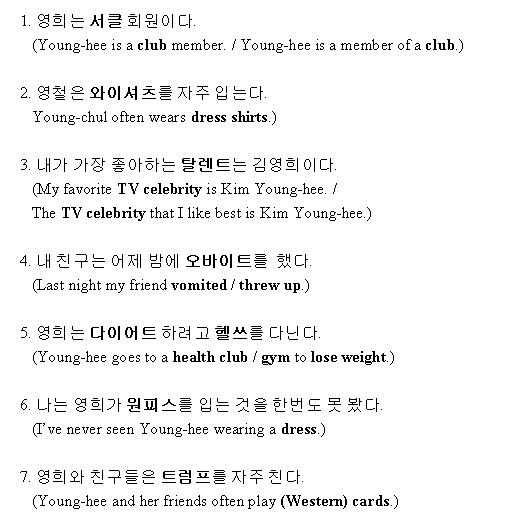![]()
Chat
Room
Classifieds
Exchange
Rates
The
Exit
Features
Food
Graffiti
Wall
Guestbook
Info
Center
Language
Guide
Links
Movie
Listings
News
Photo
Gallery
Places
Profiles
Pusan
Time
Pusan
Weather
Q
& A
What's
Going On
Writings

|
|
|
|
|
Teaching Techniques for Korean Loan-word Interference
|

|
| Click on the photo to see a full size image. To watch the video clip, click on the 'watch' icon. To download the video file to your hard drive, RIGHT CLICK on the 'download' icon and 'save link as'. For more information on how to watch and download video click here. You will need to have the Free Real Player installed in order to open the video files. You can download it for free here. |
|
ABSTRACT With the large influx of loan-words into the Korean lexicon from the English language, the number of false cognates it contains is also substantial. These false cognates, also known as “false friends”, often become obstacles to English learning because of the English learner’s unawareness of the difference in meaning of the Korean word or term from its English language source. Many of the most common of these problematic pairs and their semantic differences will be discussed. In addition, three classroom teaching techniques will be presented which effectively delineate the semantic differences in the pairs of false cognates. Two of these techniques involve the use of pictorial representations by class members while the other involves a simple translation technique with interest-holding error analysis. In addition to the teaching techniques, the information presented on Korean-English false cognates should be of teaching value to the EFL teacher in Korea. PRESENTER
BIOGRAPHY
False Cognates Teaching Techniques for
David E. Shaffer
The Korean lexicon has witnessed the addition of numerous English words
in recent years. Along with the many Korean-English cognates are quite
a few false cognates, also known as "false friends," which often become
obstacles to English learning due to the English learner's unawareness
of the difference in meaning of the Korean word or term from its English
language source. The most common of these problematic pairs and their semantic
differences will are listed below. In addition, a number of classroom teaching
techniques are presented which effectively delineate the semantic differences
in the pairs of false cognates. These techniques include the use of pictorial
representations by class members and a simple translation technique with
interest-holding error analysis.
False Cognates:
A. English Duel Draw Technique
B. English Quick Draw Technique
C. Translation Turkey Shoot
(Korean to English)
|
